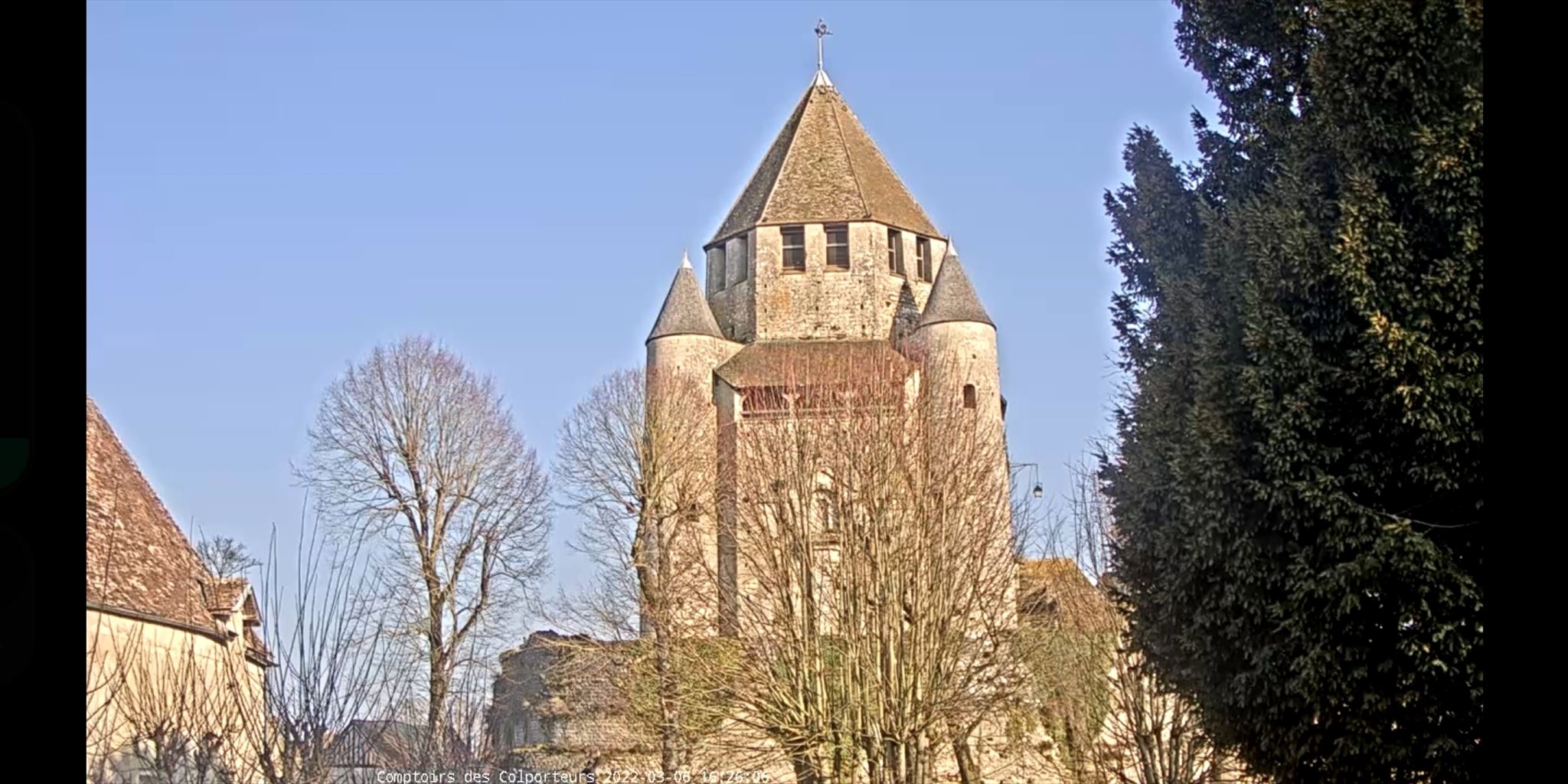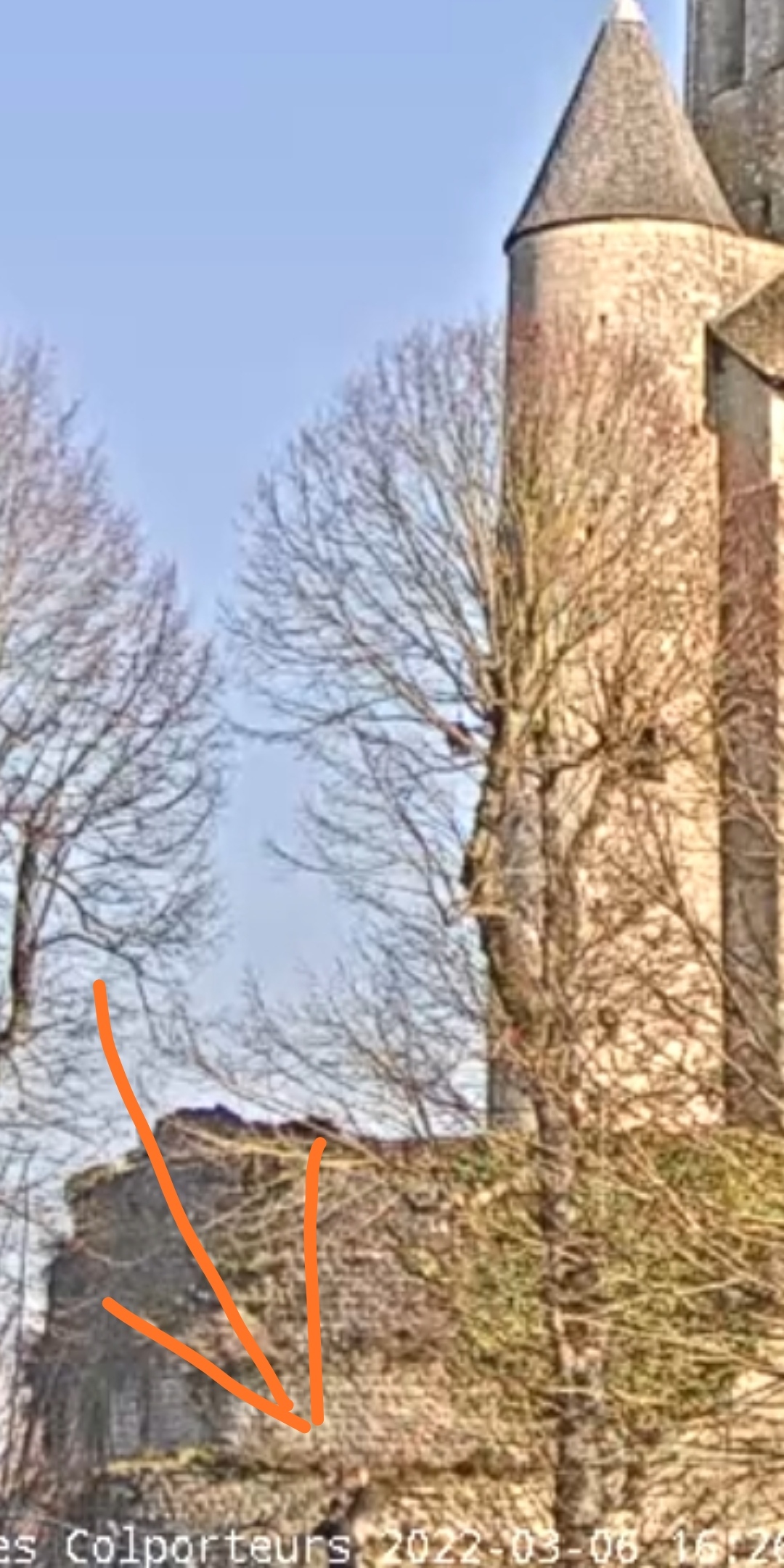Tour César
La Tour César est un donjon du xiie siècle, situé à Provins au sommet de la colline où s'est installée la ville haute.
C'est le seul donjon octogonal à base carrée connu. La tour servit également de prison. Durant la Guerre de Cent Ans, elle fut occupée par les Anglais qui l'ont entourée d'une muraille.
La tour César fait l’objet d’un classement au titre des monuments historiques depuis 1846.
Pour validé cette virtuel vous devez vous prendre en photo grace à la webcam https://www.vision-environnement.com/livecams/webcam.php?webcam=provins.

La photo peut etre prise depuis la pied de la tour où l'interieur si vous avez payé l'entrée. Levez les bras à minima ou prenez une tout autre pose qui prouve que c'est vous et non pas juste des moldus au pied de la tour ;)

Si la webcam est en panne vous pouvez aussi joindre une photo de vous ( le selfie n'est pas obligatoire) ou toutes objet personnel vous appartenant. La webcam est équipé de la fonction timeline donc tres facile a vérifié ;)
Et maintenant un peu d'Histoire
Une première tour, existant en 1137, est nommée dans la charte fixant les limites des foires de Champagne.
La tour actuelle fut bâtie sur un éperon rocheux qui se trouve sur la Ville-Haute, appelée autrefois, "Tour du Roi", "Grosse Tour", "Tour aux prisonniers", elle a probablement été construite sous le règne de Henri le Libéral, après 1150 selon André Châtelain. Une légende veut que l'origine de Provins se trouve à l'époque romaine. Suivant cette tradition, la grosse tour de Provins aurait été bâtie par Jules César. Toutefois aucune source ne prouve que César ne soit jamais venu À Provins. ce nom est plutôt à rapprocher d'un symbole de puissance. À l'origine, la tour n'était pas couverte et se terminait par des créneaux. Le toit actuel et la charpente datent des xvie et xviie siècles.
Architecture
Cette tour est construite sur une motte artificielle. Elle est à cheval sur les murs des fortifications dont elle avait la fonction de donjon. Elle a également servi de prison, mais son rôle principal était de l'ordre du militaire: deux chemins de ronde permettant le guet sur la plaine de Brie.

Elle présente un plan carré à sa base, devenant octogonal à mi-hauteur, flanquée de quatre tourelles se détachant au niveau du premier chemin de ronde. La base de l'édifice est couverte par une lourde muraille en maçonnerie, ajoutée par les Anglais après le siège de 1432, connue sous le nom dédaigneux de "Pâté aux Anglais". La Tour César était surmontée d'une terrasse portant une tour de guet et un chemin de ronde crénelé.

Toiture
La Tour est couverte et abrite deux cloches du xviie siècle. Elles sont posées et abrités par des charpentes de bois.
La Tour dispose aujourd'hui d'un toit avec une magnifique charpente du xviie siècle, mais avant cela, il n'en existait pas jusqu'en 1571. Du chemin de ronde, à l'ouest, on a une bonne vue de la ville haute, tandis qu'à l'est, la vue s'oriente vers la ville basse.
Cloches
La tour est aussi utilisée comme beffroi, des six cloches d'origine, cinq furent brisées et fondues en 1793 et 1798, pour la fabrication de canons et de la monnaie. La plus grosse et la seule restante a un diamètre de 1,48 m et pèse 3 000 kg. Elle porte l'inscription : « En l'an 1511, ayant été fondue / De Quiriace on me donna le nom, / Je règne dans les airs et chasse de la nuée / Diable, tonnerre et grêle par mon nom ».

Intérieur
A l'intérieur, au rez-de-chaussée, une grande salle voûtée servait d'entrepôt pour l'intendance.
A l'étage supérieur, une autre salle de mêmes dimensions mais plus haute, appelée "salle des gardes", était le centre de communication de la tour.
De là, partent les escaliers vers la salle basse, la chambre du gouverneur et les chemins de ronde. La voûte est perforée d'un "trou de service", permettant de communiquer avec le dernier chemin de ronde.
On accède aux cachots où furent gardés les prisonniers par d'étroits couloirs pris dans l'épaisseur des murs.
La tour a été couverte en 1554, et l'installation des cloches, provenant de la tour-clocher del'église Saint Quiriace effondrée, date de 1689.
Please leave the following text at the bottom of the page, so cache finders understand the Virtual Rewards 3.0 project.
Anglais
Tour César
The César Tower is a twelfth-century keep, located in Provins at the top of the hill where the upper town has settled.
It is the only octagonal dungeon with a known square base. The tower was also used as a prison. During the Hundred Years War, it was occupied by the English who surrounded it with a wall.
The Caesar tower has been classified as historic monuments since 1846.
Our mission if you accept it and to validate this virtual is simple:
Take a picture with the webcam https://www.vision-environnement.com/livecams/webcam.php?webcam=provins. The photo can be taken from the foot of the tower or inside if you have paid the entrance. Raise your arms at least or take a completely different pose that proves that it's you and not just muggles at the foot of the tower ;)
History
A first tower, existing in 1137, is named in the charter fixing the boundaries of the fairs of Champagne.
The current tower was built on a rocky outcrop on the Upper Town, formerly known as the "King's Tower," "Big Tower," "Tower of the Prisoners," probably built during the reign of Henry the Liberal , After 1150 according to André Châtelain. A legend has it that the origin of Provins is in Roman times. According to this tradition, the great tower of Provins was built by Julius Caesar. However, no source proves that Caesar never came to Provins. This name is rather to be compared to a symbol of power. Originally, the tower was not covered and ended with battlements. The current roof and the frame date from the sixteenth and seventeenth centuries.
Architecture
This tower is built on an artificial clod. It straddles the walls of the fortifications which it had the function of dungeon. It was also used as a prison, but its main role was of the order of the soldier: two circular paths allowing the lookout on the plain of Brie.

It has a square plan at its base, becoming octagonal at half-height, flanked by four turrets standing at the level of the first round path. The base of the building is covered by a heavy masonry wall, added by the English after the siege of 1432, known as the disdainful "Pate to the English". The César Tower was surmounted by a terrace with a watchtower and a crenellated walkway.

Roofing
The Tower is covered and houses two bells of the seventeenth century. They are laid and sheltered by timber framing.Today, the Tower has a roof with a magnificent 17th-century structure, but before that it did not exist until 1571. From the roundabout, to the west, there is a good view of the While in the east the view is towards the lower town.
Cloches
The tower is also used as a belfry, of the six original bells, five were broken and melted in 1793 and 1798, for the manufacture of cannon and currency. The largest and only remaining one has a diameter of 1.48 m and weighs 3 000 kg. It bears the inscription: "In the year 1511, having been melted, I was given the name of De Quiriace, / I reign in the air and chase the cloud / Devil, thunder and hail by my name."

Inside
Inside, on the ground floor, a large vaulted room served as a warehouse for the stewardship. On the upper floor, another room of the same dimensions but higher, called "room of the guards", was the communication center of the tower. From there, the stairs lead to the lower room, the governor's room and the walkways. The vault is perforated with a "service hole", allowing to communicate with the last way of round. One reaches the dungeons where the prisoners were guarded by narrow corridors in the thickness of the walls. The tower was covered in 1554, and the installation of the bells, coming from the tower-bell tower of the collapsed Saint Quiriace church, dates from 1689.
Virtual Rewards 3.0 - 2022-2023
This Virtual Cache is part of a limited release of Virtuals created between March 1, 2022 and March 1, 2023. Only 4,000 cache owners were given the opportunity to hide a Virtual Cache. Learn more about Virtual Rewards 3.0 on the Geocaching Blog.